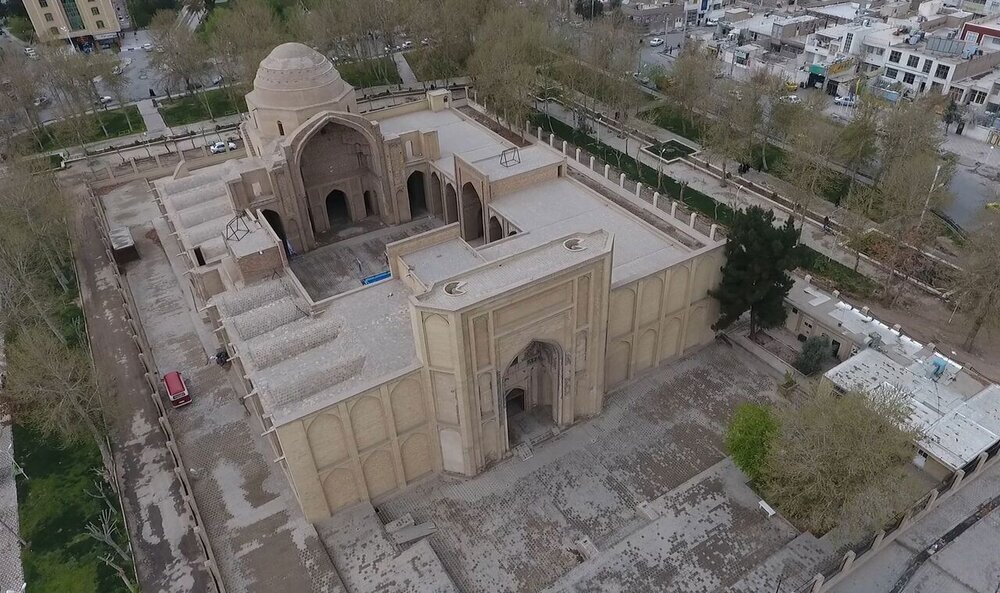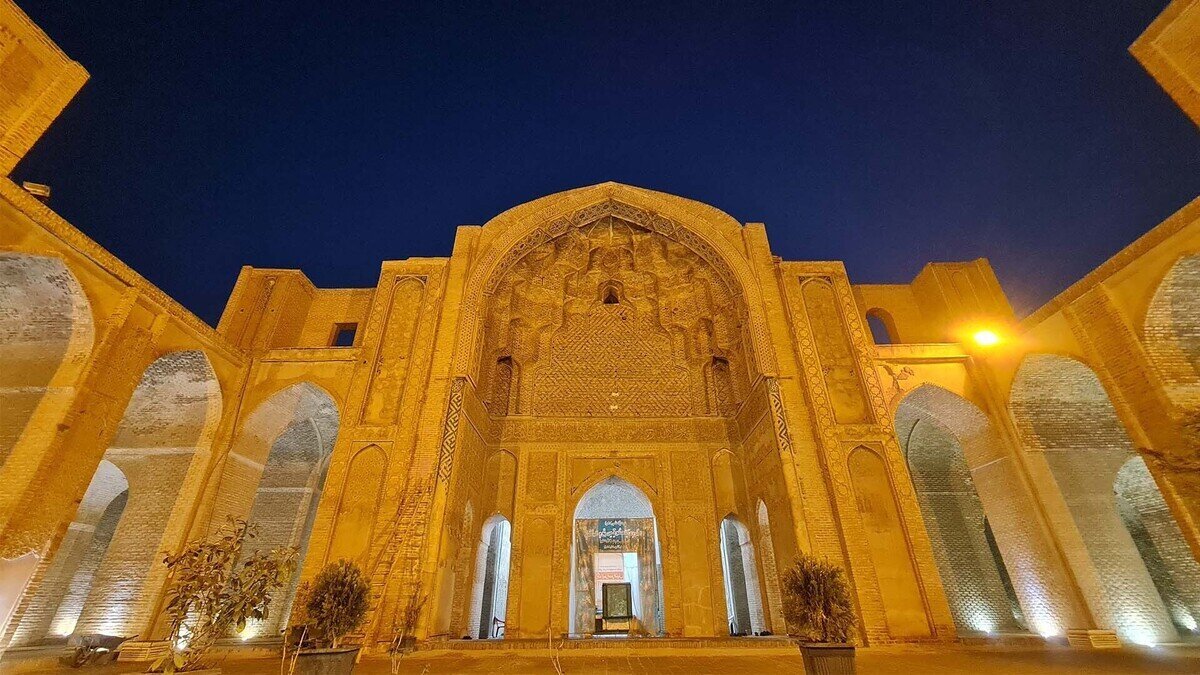TEHRAN - The head of the Cultural Heritage, Tourism, and Handicrafts Office of Varamin county has announced the preparation of a dossier for the Jameh Mosque of Varamin to seek UNESCO World Heritage status.
Mohammadreza Tajik stated that representatives from the Ministry of Cultural Heritage, Tourism, and Handicrafts have begun assessments and field visits to compile the dossier for the historical and religious monument.
The goal is to submit this dossier to the United Nations World Tourism Organization for consideration as a collective World Heritage of Iranian mosques.
The mosque showcases exquisite craftsmanship in brickwork, tilework, stucco with Islamic designs, and calligraphic inscriptions, reflecting the highest levels of artistry and beauty.Tajik emphasized the support and cooperation of the Tehran province’s Cultural Heritage Office in this effort, noting that the initiative aims to make optimal use of the region's tourism potential and bring transformation to the Varamin plain. He expressed hope that with the establishment of a tourism committee at the provincial and local levels, Varamin will achieve global and international recognition.
Elsewhere in his remarks, the official added that the Jameh Mosque of Varamin represents the historical and religious identity of the land it is located in, serving as a symbol of its ancient and proud civilization.
Tajik highlighted that registering a site on the World Heritage list offers numerous benefits, including enhanced protection and preservation, as well as the promotion of its values to a global audience. He noted that such recognition would turn the mosque into a global tourist destination, attracting numerous international and domestic visitors.
The official further mentioned that the preparation of the dossier was among the requests raised during the visit of the former tourism minister, Ezzatollah Zarghami, to Varamin last September. It also reflects the demands of local authorities, experts, researchers, artists, and the people of Varamin.
He added that the Jameh Mosque of Varamin is an example of a four-iwan mosque, featuring an inscription dated 722 AH (1322-23 CE). Its construction began under the order of Sultan Muhammad Khodabandeh (Oljeitu) and was completed during the reign of Sultan Abu Sa'id Bahadur Khan, the last ruler of the Ilkhanid dynasty, a division of the Mongol Empire that encompassed the present-day countries of Iran, Azerbaijan, Georgia, and Armenia, as well as parts of Iraq, Turkey, Afghanistan, and Pakistan.
“The mosque showcases exquisite craftsmanship in brickwork, tilework, stucco with Islamic designs, and calligraphic inscriptions, reflecting the highest levels of artistry and beauty.”
The terms “Jameh Mosque”, “Masjed-e Jameh” and “Friday Mosque” are used in Iran for a grand communal mosque where mandatory Friday prayers are performed: the phrase is used in other Muslim countries but only in Iran does it designate this purpose.
Four-iwan layout
The Jameh Mosque of Varamin follows the four-iwan (portico) plan. On the qibla (south) side of the courtyard, a broad and shallow iwan with an arched muqarnas semidome leads onto a domed hall with a mihrab. The dome rises from a sixteen-sided drum with alternating windows, resting on an octagonal transitional area formed by four squinches. The height of the dome chamber, which rises above the height of the other iwans, accentuates this important space.
The mosque’s decorative treatment is rich on the surface; the materials employed include plaster, glazed and unglazed terracotta, and glazed tile-mosaic work. A portal iwan of the mosque features glazed terracotta in dark and light blue, forming a geometric pattern on a background of unglazed terracotta.

Its sunburst dome features a medallion at its center, from which descends an arabesque of a diamond geometric motif that expands with the curve of the dome.
The qibla iwan above the dome chamber is decorated with richly ornamented geometric patterns in terracotta, above which an inscription band runs horizontally and marks the beginning of the iwan’s vault, which comprises a cluster of muqarnas units. These units are, in turn, constructed out of smaller bricks.
The spandrels of the arches of the four squinches feature glazed terracotta and incorporate in their vaults three tiers of muqarnas. Four windows are situated on the walls of the chambers, each between two squinches.
30 mosques selected so far
Earlier in July, the Deputy Minister of Cultural Heritage, Tourism, and Handicrafts announced that 30 historical mosques across 12 Iranian provinces have been identified as eligible for possible inclusion in the UNESCO World Heritage list.
Ali Darabi made the remarks during his visit to the Jameh Mosque of Saveh, one of Iran’s candidates for this collective heritage listing.
In every corner of Iran, cascades of photogenic domes and minarets can be seen as inseparable elements of mosques, some of which are widely known as timeless benchmarks of Islamic architecture.
Among the country’s must-see, gorgeous places of worship are Nasir Al-Molk Mosque in Shiraz, Sheikh Lotfollah Mosque in Isfahan, Shah Cheragh Mosque in Shiraz, Imam Mosque of Isfahan, Jameh Mosque of Yazd, Blue Mosque in Tabriz, Goharshad Mosque in Mashhad, Vakil Mosque in Shiraz, Agha Bozorg Mosque in Kashan, to name a few.


No comments:
Post a Comment